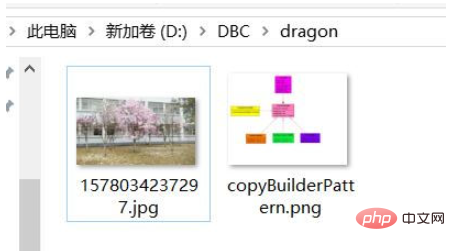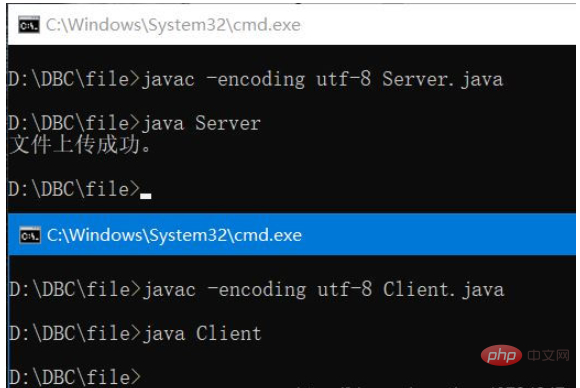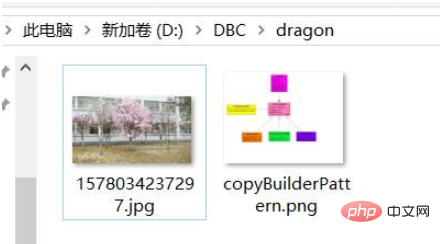如何使用Java將本機檔案複製到網路檔案並上傳?
檔案複製
#檔案複製: 將一個本機檔案從一個目錄,複製到另一個目錄。 (透過本機檔案系統)
主要程式碼
package dragon;
import java.io.BufferedInputStream;
import java.io.BufferedOutputStream;
import java.io.File;
import java.io.FileInputStream;
import java.io.FileNotFoundException;
import java.io.FileOutputStream;
import java.io.IOException;
/**
* 本地文件复制:
* 将文件从一个地方复制到另一个地方。
*
* @author Alfred
* */
public class FileCopy {
public FileCopy() {}
public void fileCopy(String target, String output) throws IOException {
File targetFile = new File(target);
File outputPath = new File(output);
this.init(targetFile, outputPath);
/**注意这里使用了 try with resource 语句,所以不需要显示的关闭流了。
* 而且,再关闭流操作中,会自动调用 flush 方法,如果不放心,
* 可以在每个write 方法后面,强制刷新一下。
* */
try (
BufferedInputStream bis = new BufferedInputStream(new FileInputStream(targetFile)); //创建输出文件
BufferedOutputStream bos = new BufferedOutputStream(new FileOutputStream(new File(outputPath, "copy"+targetFile.getName())))){
int hasRead = 0;
byte[] b = new byte[1024];
while ((hasRead = bis.read(b)) != -1) {
bos.write(b, 0, hasRead);
}
}
System.out.println("文件复制成功");
}
//数据校验及初始化工作
private void init(File targetFile, File outputPath) throws FileNotFoundException {
if (!targetFile.exists()) {
throw new FileNotFoundException("目标文件不存在:"+targetFile.getAbsolutePath());
} else {
if (!targetFile.isFile()) {
throw new FileNotFoundException("目标文件是一个目录:"+targetFile.getAbsolutePath());
}
}
if (!outputPath.exists()) {
if (!outputPath.mkdirs()) {
throw new FileNotFoundException("无法创建输出路径:"+outputPath.getAbsolutePath());
}
} else {
if (!outputPath.isDirectory()) {
throw new FileNotFoundException("输出路径不是一个目录:"+outputPath.getAbsolutePath());
}
}
}
}測試類別
package dragon;
import java.io.IOException;
public class FileCopyTest {
public static void main(String[] args) throws IOException {
String target = "D:/DB/BuilderPattern.png";
String output = "D:/DBC/dragon/";
FileCopy copy = new FileCopy();
copy.fileCopy(target, output);
}
}執行結果
注意:右邊檔案是複製的結果,左邊的不是。 (下面會提到!)

說明
#上面的程式碼只是將一個本地檔案從一個目錄,複製到另一個目錄,還是比較簡單的,這只是一個原理性的程式碼,來說明輸入輸出流的應用。 將檔案從一個地方複製到另一個地方。
網路檔案傳輸(TCP)
**網路檔案傳輸(TCP):**使用套接字(TCP)進行演示,檔案從一個地方複製到另一個地方。 (透過網路的方式。)
主要程式碼
#Server
import java.io.BufferedInputStream;
import java.io.BufferedOutputStream;
import java.io.BufferedReader;
import java.io.File;
import java.io.FileOutputStream;
import java.io.IOException;
import java.io.InputStreamReader;
import java.net.ServerSocket;
import java.net.Socket;
public class Server {
public static void main(String[] args) throws IOException {
try (
ServerSocket server = new ServerSocket(8080)){
Socket client = server.accept();
//开始读取文件
try (
BufferedInputStream bis = new BufferedInputStream(client.getInputStream());
BufferedOutputStream bos = new BufferedOutputStream(new FileOutputStream(new File("D:/DBC/dragon", System.currentTimeMillis()+".jpg")))){
int hasRead = 0;
byte[] b = new byte[1024];
while ((hasRead = bis.read(b)) != -1) {
bos.write(b, 0, hasRead);
}
}
System.out.println("文件上传成功。");
}
}
}Client
import java.io.BufferedInputStream;
import java.io.BufferedOutputStream;
import java.io.BufferedWriter;
import java.io.File;
import java.io.FileInputStream;
import java.io.IOException;
import java.io.OutputStreamWriter;
import java.net.Socket;
import java.net.UnknownHostException;
public class Client {
public static void main(String[] args) throws UnknownHostException, IOException {
try (Socket client = new Socket("127.0.0.1", 8080)){
File file = new File("D:/DB/netFile/001.jpg");
//开始写入文件
try (
BufferedInputStream bis = new BufferedInputStream(new FileInputStream(file));
BufferedOutputStream bos = new BufferedOutputStream(client.getOutputStream())){
int hasRead = 0;
byte[] b = new byte[1024];
while ((hasRead = bis.read(b)) != -1) {
bos.write(b, 0, hasRead);
}
}
}
}
}執行效果
執行程式

#注意:這個上傳檔案的目錄和本機檔案複製是在同一個目錄,但是使用的方式不一樣,檔案的命名方式不一樣,使用的是目前的毫秒數。 複製前檔案

複製後檔案

#說明
透過網路的方式使用流,使用傳輸層的TCP協議,綁定了8080 端口,這裡需要一些網路的知識,不過都是最基本的知識。可以看出來,上面這個 Server端和 Client端的程式碼很簡單,甚至沒有實作傳輸檔案的後綴名稱! (哈哈,其實是我對套接字程式設計不太熟悉,傳輸檔名的話,我一開始嘗試,但是沒有成功。不過這個不影響這個例子,套接字我會抽時間來看的。哈!)注意這裡我要表達的意思透過網路將檔案從一個地方複製到另一個地方。 (使用較為的是傳輸層的協定)
網路檔案傳輸(HTTP)
HTTP 是建立在TCP/IP 協定之上的應用層協議,傳輸層協定使用起來感覺還是比較麻煩的,不如應用層協定用起來方便。
網路檔案傳輸(HTTP): 這裡使用 Servlet(3.0以上)(JSP)技術來舉例,就以我們最常使用的檔案上傳為例。
使用 HTTP 協定將檔案從一個地方複製到另一個地方。
使用 apache 元件實作檔案上傳
注意:因為原始的透過 Servlet 上傳檔案較為麻煩,現在都是使用一些元件來達成這個檔案上傳的功能的。 (我還沒找到檔案上傳最原始的寫法,想必應該是很繁瑣的吧!)這裡使用兩個jar包:
commons-fileupload-1.4.jar
commons-io-2.6.jar
#注意:在apache 網站可以下載到。
上傳檔案的 Servlet
package com.study;
import java.io.File;
import java.io.IOException;
import java.util.Iterator;
import java.util.List;
import javax.servlet.ServletException;
import javax.servlet.annotation.WebServlet;
import javax.servlet.http.HttpServlet;
import javax.servlet.http.HttpServletRequest;
import javax.servlet.http.HttpServletResponse;
import org.apache.commons.fileupload.FileItem;
import org.apache.commons.fileupload.FileItemFactory;
import org.apache.commons.fileupload.disk.DiskFileItemFactory;
import org.apache.commons.fileupload.servlet.ServletFileUpload;
/**
* Servlet implementation class UploadServlet
*/
@WebServlet("/UploadServlet")
public class UploadServlet extends HttpServlet {
private static final long serialVersionUID = 1L;
protected void doPost(HttpServletRequest request, HttpServletResponse response) throws ServletException, IOException {
//如果不是文件上传的话,直接不处理,这样比较省事
if (ServletFileUpload.isMultipartContent(request)) {
//获取(或者创建)上传文件的路径
String path = request.getServletContext().getRealPath("/image");
File uploadPath = new File(path);
if (!uploadPath.exists()) {
uploadPath.mkdir();
}
FileItemFactory factory = new DiskFileItemFactory();
ServletFileUpload upload = new ServletFileUpload(factory);
List<FileItem> items;
try {
items = upload.parseRequest(request);
Iterator<FileItem> it = items.iterator();
while (it.hasNext()) {
FileItem item = it.next();
//处理上传文件
if (!item.isFormField()) {
String filename = new File(item.getName()).getName();
System.out.println(filename);
File file = new File(uploadPath, filename);
item.write(file);
response.sendRedirect("success.jsp");
}
}
} catch (Exception e) {
e.printStackTrace();
}
}
}
}#上傳檔案的jsp中,只需要一個form表單即可。
<h2 id="文件上传">文件上传</h2>
<form action="NewUpload" method="post" enctype="multipart/form-data">
<input type="file" name="image">
<input type="submit" value="上传">
</form>運行效果
說明
#雖然這樣處理對於上傳檔案很好,但是因為使用的都是較成熟的技術,對於想了解輸入輸出流的我們來說,就不是那麼好了。從這個例子中,基本上看不到輸入輸出流的用法了,都被封裝起來了。
使用 Servlet 3.0 以後的新技術實作檔案上傳
package com.study;
import java.io.BufferedInputStream;
import java.io.BufferedOutputStream;
import java.io.File;
import java.io.FileOutputStream;
import java.io.IOException;
import java.util.UUID;
import javax.servlet.ServletException;
import javax.servlet.annotation.MultipartConfig;
import javax.servlet.annotation.WebServlet;
import javax.servlet.http.HttpServlet;
import javax.servlet.http.HttpServletRequest;
import javax.servlet.http.HttpServletResponse;
import javax.servlet.http.Part;
/**
* Servlet implementation class FileUpload
*/
@MultipartConfig
@WebServlet("/FileUpload")
public class FileUpload extends HttpServlet {
private static final long serialVersionUID = 1L;
protected void doGet(HttpServletRequest request, HttpServletResponse response) throws ServletException, IOException {
Part part = request.getPart("image");
String header = part.getHeader("Content-Disposition");
System.out.println(header);
String filename = header.substring(header.lastIndexOf("filename=\"")+10, header.lastIndexOf("\""));
String fileSuffix = filename.lastIndexOf(".") != -1 ? filename.substring(filename.lastIndexOf(".")) : "";
String uploadPath = request.getServletContext().getRealPath("/image");
File path = new File(uploadPath);
if (!path.exists()) {
path.mkdir();
}
filename = UUID.randomUUID()+fileSuffix;
try (
BufferedInputStream bis = new BufferedInputStream(part.getInputStream());
BufferedOutputStream bos = new BufferedOutputStream(new FileOutputStream(new File(path, filename)))){
int hasRead = 0;
byte[] b = new byte[1024];
while ((hasRead = bis.read(b)) != -1) {
bos.write(b, 0, hasRead);
}
}
response.sendRedirect("success.jsp");
}
protected void doPost(HttpServletRequest request, HttpServletResponse response) throws ServletException, IOException {
doGet(request, response);
}
}使用 Servlet 3.0 的新特性實現,這裡使用了 @MultipartConfig註解。 (如果不使用這個註解,會無法正常工作!感興趣的,可以多去了解一下。)
注意:下面這段程式碼,這裡我捨近求遠了,但是這正是我想要看到的。同樣是輸入輸出流,注意這個和上面的幾個例子做對比。
try (
BufferedInputStream bis = new BufferedInputStream(part.getInputStream());
BufferedOutputStream bos = new BufferedOutputStream(new FileOutputStream(new File(path, filename)))){
int hasRead = 0;
byte[] b = new byte[1024];
while ((hasRead = bis.read(b)) != -1) {
bos.write(b, 0, hasRead);
}
}不使用apache 元件的更為簡單的方式是下面這種:
package com.study;
import java.io.File;
import java.io.IOException;
import java.util.UUID;
import javax.servlet.ServletException;
import javax.servlet.annotation.MultipartConfig;
import javax.servlet.annotation.WebServlet;
import javax.servlet.http.HttpServlet;
import javax.servlet.http.HttpServletRequest;
import javax.servlet.http.HttpServletResponse;
import javax.servlet.http.Part;
/**
* Servlet implementation class NewUpload
*/
@MultipartConfig
@WebServlet("/NewUpload")
public class NewUpload extends HttpServlet {
private static final long serialVersionUID = 1L;
protected void doPost(HttpServletRequest request, HttpServletResponse response) throws ServletException, IOException {
Part part = request.getPart("image");
String header = part.getHeader("Content-Disposition");
System.out.println(header);
String filename = header.substring(header.lastIndexOf("filename=\"")+10, header.lastIndexOf("\""));
String fileSuffix = filename.lastIndexOf(".") != -1 ? filename.substring(filename.lastIndexOf(".")) : "";
String uploadPath = request.getServletContext().getRealPath("/image");
File path = new File(uploadPath);
if (!path.exists()) {
path.mkdir();
}
filename = uploadPath+File.separator+System.currentTimeMillis()+UUID.randomUUID().toString()+fileSuffix;
part.write(filename);
response.sendRedirect("success.jsp");
}
}真正寫入檔案的只有這一步了,前面全是處理文件名和上傳檔案路徑相關的程式碼。使用 HTTP 的三種方式都有處理檔案名稱和上傳檔案路徑這段程式碼。
如果通过这段代码,那就更看不出什么东西来了,只知道这样做,一个文件就会被写入相应的路径。
part.write(filename);
以上是如何使用Java將本機檔案複製到網路檔案並上傳?的詳細內容。更多資訊請關注PHP中文網其他相關文章!

熱AI工具

Undresser.AI Undress
人工智慧驅動的應用程序,用於創建逼真的裸體照片

AI Clothes Remover
用於從照片中去除衣服的線上人工智慧工具。

Undress AI Tool
免費脫衣圖片

Clothoff.io
AI脫衣器

Video Face Swap
使用我們完全免費的人工智慧換臉工具,輕鬆在任何影片中換臉!

熱門文章

熱工具

記事本++7.3.1
好用且免費的程式碼編輯器

SublimeText3漢化版
中文版,非常好用

禪工作室 13.0.1
強大的PHP整合開發環境

Dreamweaver CS6
視覺化網頁開發工具

SublimeText3 Mac版
神級程式碼編輯軟體(SublimeText3)
 突破或從Java 8流返回?
Feb 07, 2025 pm 12:09 PM
突破或從Java 8流返回?
Feb 07, 2025 pm 12:09 PM
Java 8引入了Stream API,提供了一種強大且表達力豐富的處理數據集合的方式。然而,使用Stream時,一個常見問題是:如何從forEach操作中中斷或返回? 傳統循環允許提前中斷或返回,但Stream的forEach方法並不直接支持這種方式。本文將解釋原因,並探討在Stream處理系統中實現提前終止的替代方法。 延伸閱讀: Java Stream API改進 理解Stream forEach forEach方法是一個終端操作,它對Stream中的每個元素執行一個操作。它的設計意圖是處
 PHP:網絡開發的關鍵語言
Apr 13, 2025 am 12:08 AM
PHP:網絡開發的關鍵語言
Apr 13, 2025 am 12:08 AM
PHP是一種廣泛應用於服務器端的腳本語言,特別適合web開發。 1.PHP可以嵌入HTML,處理HTTP請求和響應,支持多種數據庫。 2.PHP用於生成動態網頁內容,處理表單數據,訪問數據庫等,具有強大的社區支持和開源資源。 3.PHP是解釋型語言,執行過程包括詞法分析、語法分析、編譯和執行。 4.PHP可以與MySQL結合用於用戶註冊系統等高級應用。 5.調試PHP時,可使用error_reporting()和var_dump()等函數。 6.優化PHP代碼可通過緩存機制、優化數據庫查詢和使用內置函數。 7
 PHP與Python:了解差異
Apr 11, 2025 am 12:15 AM
PHP與Python:了解差異
Apr 11, 2025 am 12:15 AM
PHP和Python各有優勢,選擇應基於項目需求。 1.PHP適合web開發,語法簡單,執行效率高。 2.Python適用於數據科學和機器學習,語法簡潔,庫豐富。
 PHP與其他語言:比較
Apr 13, 2025 am 12:19 AM
PHP與其他語言:比較
Apr 13, 2025 am 12:19 AM
PHP適合web開發,特別是在快速開發和處理動態內容方面表現出色,但不擅長數據科學和企業級應用。與Python相比,PHP在web開發中更具優勢,但在數據科學領域不如Python;與Java相比,PHP在企業級應用中表現較差,但在web開發中更靈活;與JavaScript相比,PHP在後端開發中更簡潔,但在前端開發中不如JavaScript。
 PHP與Python:核心功能
Apr 13, 2025 am 12:16 AM
PHP與Python:核心功能
Apr 13, 2025 am 12:16 AM
PHP和Python各有優勢,適合不同場景。 1.PHP適用於web開發,提供內置web服務器和豐富函數庫。 2.Python適合數據科學和機器學習,語法簡潔且有強大標準庫。選擇時應根據項目需求決定。
 PHP的影響:網絡開發及以後
Apr 18, 2025 am 12:10 AM
PHP的影響:網絡開發及以後
Apr 18, 2025 am 12:10 AM
PHPhassignificantlyimpactedwebdevelopmentandextendsbeyondit.1)ItpowersmajorplatformslikeWordPressandexcelsindatabaseinteractions.2)PHP'sadaptabilityallowsittoscaleforlargeapplicationsusingframeworkslikeLaravel.3)Beyondweb,PHPisusedincommand-linescrip
 Java程序查找膠囊的體積
Feb 07, 2025 am 11:37 AM
Java程序查找膠囊的體積
Feb 07, 2025 am 11:37 AM
膠囊是一種三維幾何圖形,由一個圓柱體和兩端各一個半球體組成。膠囊的體積可以通過將圓柱體的體積和兩端半球體的體積相加來計算。本教程將討論如何使用不同的方法在Java中計算給定膠囊的體積。 膠囊體積公式 膠囊體積的公式如下: 膠囊體積 = 圓柱體體積 兩個半球體體積 其中, r: 半球體的半徑。 h: 圓柱體的高度(不包括半球體)。 例子 1 輸入 半徑 = 5 單位 高度 = 10 單位 輸出 體積 = 1570.8 立方單位 解釋 使用公式計算體積: 體積 = π × r2 × h (4
 PHP:許多網站的基礎
Apr 13, 2025 am 12:07 AM
PHP:許多網站的基礎
Apr 13, 2025 am 12:07 AM
PHP成為許多網站首選技術棧的原因包括其易用性、強大社區支持和廣泛應用。 1)易於學習和使用,適合初學者。 2)擁有龐大的開發者社區,資源豐富。 3)廣泛應用於WordPress、Drupal等平台。 4)與Web服務器緊密集成,簡化開發部署。






